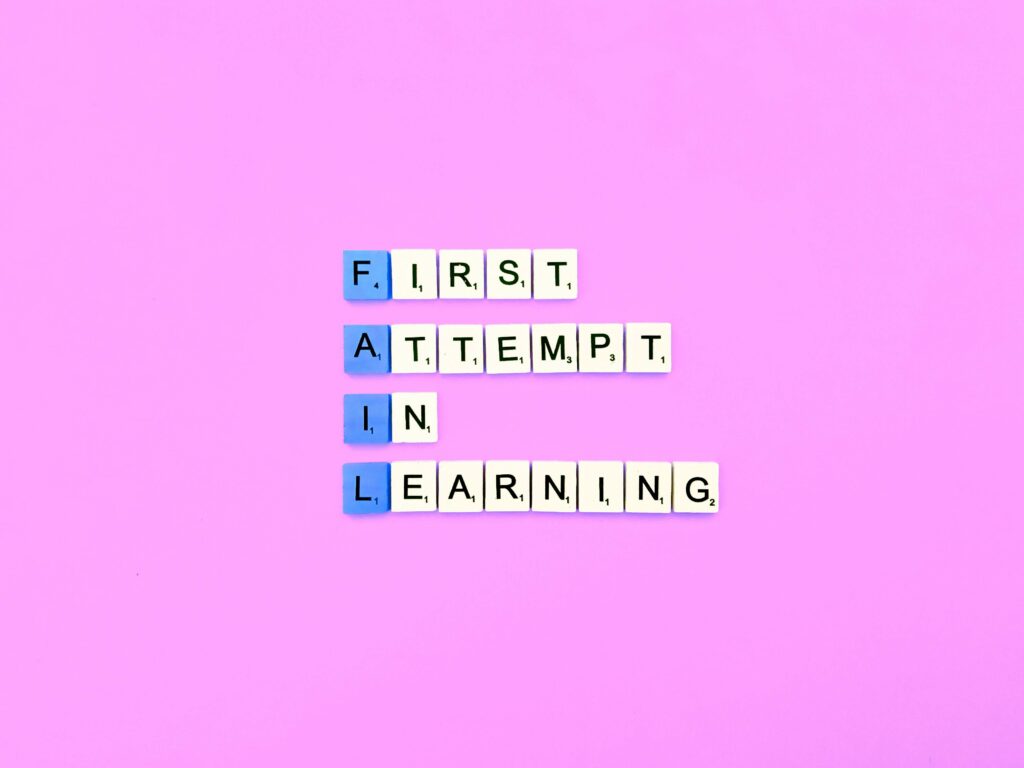There’s no use in boasting a list of core values and company culture with no practice to show for it.
Whether you’re looking for ways to reinforce your existing culture or contemplating shaping a new culture entirely…
Here are 8 unique, fun and engaging ways to foster the company culture you desire. They’re doable, cost-effective and employee-led, all done to improve employee engagement and morale!
1. Lunch & Learn Sessions

What is it?
A lunch-and-learn program is exactly what it sounds like! It’s where employees get together to teach and learn from each other while having lunch.
Some companies use this time to complete training or teach each other skills not directly related to their work. It’s a great way to train existing employees while attracting new hires who love learning new things.
Companies like HealthMetrics have their own Brown Bag Sessions – an open discussion where employees can talk and learn about any topic under the sun!
They’ve found that it was successful at drumming up new interest in employees and fostered healthy communication between different groups.
Check out HealthMetrics’ Hiredly Company Profile here.
How it improves your company culture
- It promotes a culture of learning.
- It encourages networking between employees in different departments.
- Improves your team’s leadership and presentation skills.
- Employee-led events can improve employee engagement.
Thinking of introducing your own lunch-and-learn sessions? Keep these in mind:
- Stick to light topics and keep it casual
- Don’t forget to accommodate your remote employees (if any)
- Schedule in advance so your team has time to prepare
2. Pairing Up

What is it?
Initially introduced by software engineer Kent Beck in Extreme Programming, Pair Programming is an agile software development technique that requires two programmers working at one workstation.
The idea is that one programmer writes the code, while the other reviews each line typed in.
Menlo Innovations co-founder Richard Sheridan swears by the pair programming method in his book on building a joyful work environment, Joy Inc.
You don’t have to be a techie to engage in Pair Work either! You can apply this concept to other non-technical tasks too. At Menlo Innovations, other roles like Project Managers have also benefitted from Pair Work.
Why it’s great for the culture
- Quality of work increases while saving time and costs in the long run. While it will increase the total number of person-hours, many who practice pair programming or pair work report less time spent on correcting mistakes.
- It encourages healthy communication between team members because pairs are switched after a project or task is complete.
- Pairs of employees with different sets of skills and experience can learn from each other.
- Just like Menlo Innovations employees, your employees will be more engaged and productive.
- It trains your employees for onboarding.
Related read: Pairing Up: The Advantages of a Team of Two at Work by Laura Stack
3. Show & Tell

While working adults like us are quick to associate Show & Tells with child’s play, there’s merit in introducing this activity in a work setting.
Gamestorming (a team of business professionals who encourage the implementation of games to promote creativity and innovation) suggests having Show & Tell sessions before anything you and your team work on. It could be a new project, an organizational restructuring, or even a change in the company’s mission or goals.
The method is simple. Before a meeting or discussion, ask your employees to bring an object that they think represents what you are working on to show and tell at the start of a meeting.
It’s a good way to break the ice and warm people up before a discussion. But ultimately, the goal of this practice is to get a deeper understanding of their perspective. Take note of the keywords they bring up and write them down so you can address them during the discussion.
Why it’s great for your team discussions
- It gives you an honest look at your team’s understanding or opinion on a certain topic.
- It’s a low-pressure activity that lightens the mood of any meeting.
- When forced to think in terms of metaphors, it promotes thinking creatively.
- It encourages open communication between team members.
Want to learn more about this form of Show & Tell? Check out Gamestorming’s article on How to Play here.
4. Form a Culture Committee

What is the Culture Committee?
The culture committee is a team of employees from different departments that embody the essence of your company’s culture.
It’s an employee-led group that comes together to discuss and organize everything that pertains to the team culture. This can go from planning team events and activities to screening candidates for hire.
At Hiredly, we have our very own Culture Committee that actively screens potential hires before they join the team.
Because culture fit is a huge deal for us, a culture interview is the final stage of our job interviewing process. Even after a candidate has passed their technical interview, if our cultures don’t match, they don’t make it in.
Why you need a culture committee
- It’s a democratic way of letting your employees have a say in the work environment they work in.
- Having ownership of how the company culture is shaped can help employees feel more engaged.
- It makes your job as an employer easier. Grouping a team of employees who embody your company’s core values will help sustain the culture across all other members.
- Filtering candidates by culture fit from the start can prevent issues in conflicting team dynamics in the long run.
5. Mentorship Program

What is a Mentorship Program?
A mentorship program is when you match an experienced employee with a less experienced one to speed up learning.
Tech companies like Google and Uber have official mentoring programs to help their existing employees get better at their jobs.
Why you need a mentorship program
- Under the guidance of an experienced employee, new hires can learn and catch up fast.
- On top of formal job training, peer learning is effective for employees who learn better through one-on-one interaction.
- It’s not just great for new hires. Mentorship programs help your experienced employees develop their leadership and nurturing skills, making them better leaders.
- When matching employees with diversity in mind, mentoring is an excellent way to develop a close relationship between team members regardless of work experience and background.
- It helps new employees discover their long term career goals.
6. Fail Fast Policy

If your company depends on creativity, take a cue from the animation giant Pixar and introduce a ‘Fail Fast’ policy.
The idea is to create a culture that does not revolve around fear of failure. Avoiding trying new things because the team is afraid of failing is a mistake no company that prides on innovation can make.
Introducing a ‘Fail Fast’ policy encourages employees to make mistakes and get it wrong earlier in a task or project. Making mistakes earlier on lets them learn quicker and clears up any fundamental misunderstandings before the project or task has gotten far enough – potentially leading to even bigger errors.
Failing fast isn’t just about not being afraid of making mistakes. A core tenet of the policy is also learning from the error and doing your best to not repeat it.
Why failing fast is great for your team
- It takes the pressure off your employees, leaving a less stressful work environment.
- It promotes experimentation and innovation. Employees can get creative when finding solutions. To quote Thomas Edison, “I have not failed. I’ve just found ten thousand ways that do not work.”
- Catching a mistake earlier on can reduce the risk of bigger and more costly errors in the future.
- Talking openly about mistakes in a non-judgemental environment gives employees a safe space to be honest while promoting accountability.
Related read: Why Organizations Should Encourage Employees to Recognize Mistakes and Learn From Them
7. No Meeting Fridays

A self-explanatory practice, No Meeting Fridays (or any day you choose for that matter) is when you set a day where no meetings will be had at all. Straight and simple.
In a survey by Harvard Business Review, 71% of senior managers found meetings unproductive while 64% found them disruptive to their work.
Follow the likes of companies like Zapier and reevaluate your meeting frequency by adopting No Meeting Days!
Why it’s great for your company culture
- It gives employees (and yourself!) the space to focus and create – a full day to get into your workflow without any interruptions.
- Having a No Meeting Day on Fridays means your team can catch up on work and focus on preparing for tasks for the upcoming week, leaving the weekends free to enjoy without worry.
- Limiting your meetings means reevaluating the necessity of them at all. It will force employees to discover other ways of achieving an outcome without a lengthy discussion.
- In a survey conducted by MIT Sloan, they discovered that one no-meeting day per week improved employees’ autonomy, communication, engagement and satisfaction. This is due to a decrease in micromanagement and stress which ultimately made employees more productive!
8. Spontaneous Applause

What is it?
It’s a simple and effective form of employee recognition. The best part is it doesn’t need scheduling ahead or preparing any items (unless you want to!). All it takes is a loud voice and a round of applause from everyone in the office.
At Hiredly, we have our own version of the Spontaneous Applause each time an employee gets confirmed. The announcer rings a bell to get people’s attention and the quick announcement usually follows a brief congratulations and a brand new Hiredly hoodie for the newly confirmed staff!
Or take inspiration from Typeform and do it to celebrate any achievements sans gifts! The effect is just as meaningful.
Why it’s great for your company culture
- It’s a simple way to show employees their efforts are recognized.
- Gives talented employees the credit they deserve.
- When employees celebrate each other’s wins, it boosts the team morale and motivation.
- It’s a quick break from work that doesn’t disrupt or take too much away from people’s focus time.
For more practical advice on improving your team’s work culture, check out our other articles below:
- 4 Simple Ways We Keep Employees Engaged At Hiredly
- Employer Branding In Malaysia: What It Is And How To Identify Yours
- An Employer’s Guide To Hiring And Retaining Malaysian Gen Z Talent
